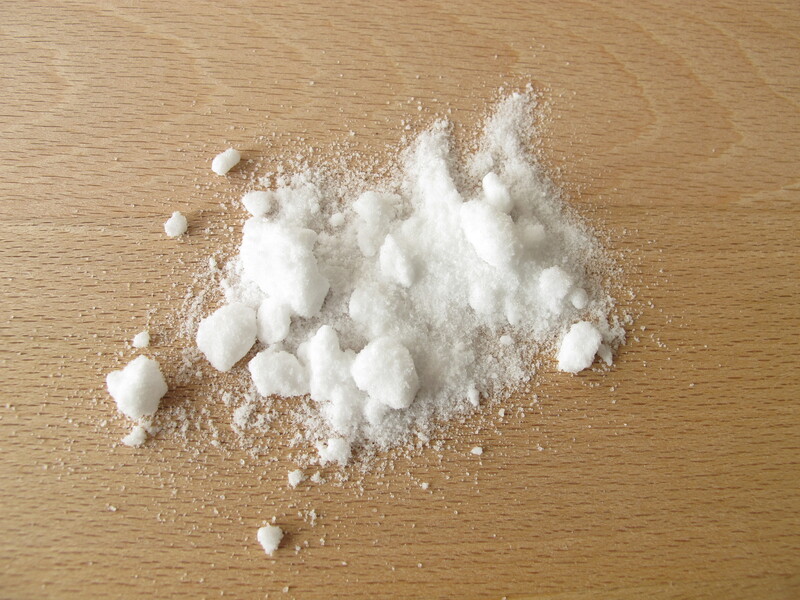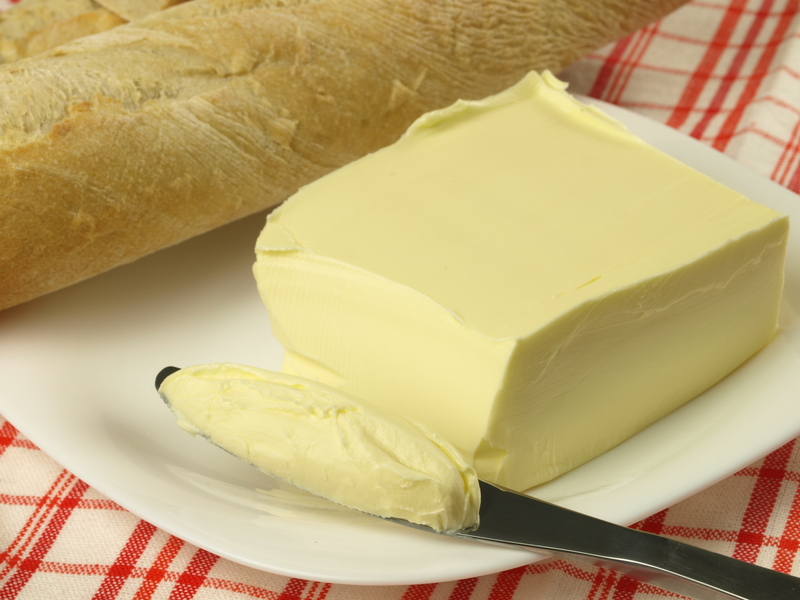Effective Techniques for Removing Window Sill Mould
Posted on 12/06/2025
Effective Techniques for Removing Window Sill Mould
Mould growth on window sills is a common and frustrating issue for many homeowners. Not only is it unsightly and unpleasant, but it can also be a potential health hazard, causing allergies and respiratory problems. Understanding effective techniques for removing window sill mould is crucial for maintaining a healthy and comfortable living environment. In this comprehensive guide, you'll discover proven methods, useful tips, and preventive measures to keep your window sills clean and mould-free.

Understanding Why Mould Grows on Window Sills
Before diving into mould removal techniques, it's essential to know why window sills are particularly susceptible to mould. Mould thrives in damp, warm, and poorly ventilated environments. Window sills often accumulate condensation, providing the perfect breeding ground for mould spores. Wooden and painted surfaces are especially vulnerable, creating areas where mould colonies flourish if left untreated.
- Condensation: Differences in indoor and outdoor temperature cause moisture to build up.
- Poor ventilation: Without enough airflow, moisture lingers, increasing mould risk.
- Organic Materials: Dust and organic debris provide fuel for mould spores.
By understanding the causes, you're better equipped to both remove and prevent mould from returning to your window sills.
How to Identify Mould on Window Sills
Identifying mould on window sills is the first step towards removing it effectively. Mould can appear in different colours, including black, green, grey, or even orange. You might notice a fuzzy, slimy, or powdery texture. Black mould (Stachybotrys chartarum) is particularly concerning and should be addressed promptly due to its potential health effects.
- Visual Cues: Discoloration or stains spreading over time.
- Odour: A persistent musty or earthy smell.
- Texture: Soft patches or powdery residue when touched.
If you spot any of these signs, it's time to take action using one of the best methods for removing window sill mould outlined below.
Safety Precautions Before Mould Removal
Mould spores can be harmful when inhaled. Take these safety measures before you start cleaning:
- Wear rubber gloves, a face mask (N95 or similar), and safety goggles.
- Open windows to improve ventilation during cleaning.
- Remove nearby curtains or blinds to prevent contaminating them.
- Place a drop cloth or old sheets under the window sill to catch debris and drips.
Effective Techniques for Removing Window Sill Mould
1. Using Household Ingredients for Mould Removal
Many window sill mould removal techniques rely on products you probably already have at home. These options are affordable, effective, and safe for most window surfaces.
White Vinegar
- Pour undiluted white vinegar into a spray bottle.
- Spray directly onto the mouldy window sill.
- Let it sit for at least an hour to break down the mould.
- Scrub gently with a soft-bristled brush or sponge.
- Wipe clean with a damp cloth and let the area dry thoroughly.
*Vinegar is naturally acidic, which kills up to 82% of mould species. Repeat if necessary for stubborn patches.*
Baking Soda Solution
- Mix one teaspoon of baking soda with two cups of water in a spray bottle.
- Shake well and spray liberally over the mouldy area.
- Scrub gently with a brush or sponge.
- Rinse with clean water, then spray with baking soda solution again to prevent regrowth.
The gentle abrasive nature of baking soda removes residue without damaging window finishes.
Hydrogen Peroxide (3%)
- Pour 3% hydrogen peroxide into a spray bottle (do not dilute).
- Spray thoroughly on the affected surface.
- Allow to bubble and sit for 10-15 minutes.
- Scrub away the mould and wipe clean with a damp cloth.
Hydrogen peroxide is a powerful oxidizer that not only kills mould but also eliminates lingering odours.
2. Commercial Anti-Mould Cleaners
If natural products fail to remove persistent mould stains, commercial solutions are available. Choose products labelled as mould or mildew removers:
- Read manufacturer instructions carefully and test on a small area first.
- Apply cleaner, let it sit for the suggested time, and scrub with a soft brush.
- Rinse thoroughly to avoid leaving toxic residues, especially on wooden sills.
3. Removing Black Mould From Wooden Window Sills
Wooden surfaces require extra care due to their porous nature. If the mould has not yet penetrated deep into the wood, follow the vinegar or hydrogen peroxide method above. For deeper infiltration, consider sanding:
- Gently sand away the top layer using fine-grit sandpaper.
- Vacuum up dust immediately to prevent spores spreading.
- Treat with anti-fungal wood treatment and repaint or reseal as needed.
Never use bleach on porous materials like wood, as it may not penetrate deeply enough and could worsen moisture problems over time.
4. Cleaning Window Sill Mould on Painted and PVC Surfaces
- Use the vinegar or hydrogen peroxide methods, taking care not to scratch painted or plastic surfaces.
- For PVC, soap and water can be used for light mould, followed by a dilute vinegar rinse.
5. Prevention During Removal
Be sure to bag and dispose of any rags or paper towels used in the process. Wash your cleaning tools in hot water and disinfect to prevent cross-contamination.
Long-Term Solutions: Preventing Mould from Returning
After successfully implementing the best practices for removing mould from window sills, the next step is prevention. Keeping your window sills dry and clean is the most effective way to prevent future outbreaks.
Improving Ventilation
- Open windows regularly to increase airflow.
- Use extract fans in kitchens and bathrooms to remove excess moisture.
- Invest in a dehumidifier if your home is prone to high humidity.
- Arrange furniture to avoid blocking window sills and vents.
Controlling Condensation
- Install double-glazed windows to minimize indoor-outdoor temperature differentials.
- Wipe down window sills and panes every morning during cold weather.
- Use moisture-absorbing crystals or silica gel packs near problem areas.
Ongoing Cleaning and Maintenance
- Dust window sills weekly to eliminate organic material mould feeds on.
- Check seals around windows to ensure they are watertight and repair any leaks promptly.
- Repaint or reseal wooden sills with mould-resistant paint or varnish.
Using Mould-Resistant Products
- Consider replacing traditional caulk with mould-resistant caulk or sealant.
- Apply anti-mould sprays seasonally, especially during wet months.
Frequently Asked Questions about Removing Window Sill Mould
Is it safe to remove mould myself?
If the affected area is small (less than 1 square metre), it's usually safe to clean it yourself by following safety precautions. For larger or recurring infestations, or if you suspect toxic black mould, consult a professional.
How can I remove black mould from painted window sills?
Mix water and vinegar or use hydrogen peroxide. Avoid scrubbing too hard as it may damage the paint; reapply treatment as necessary and touch up paint if needed after drying.
Can I use bleach to remove window sill mould?
Bleach is effective on non-porous surfaces but is less effective or potentially damaging on wood and painted surfaces. Prefer vinegar or hydrogen peroxide for safer cleaning.
Can mould on window sills make you sick?
Yes, mould exposure can cause breathing difficulties, allergies, and other health problems, particularly for sensitive individuals. Prompt removal and preventive care are essential.

When to Seek Professional Help
If you keep cleaning but the problem returns, or if you notice mould spreading to walls or ceilings, there may be an underlying moisture problem such as leaks or poor insulation. In such cases, call a professional to assess and remediate.
Conclusion: Maintain Clean, Healthy Window Sills Year-Round
By following these effective techniques for removing window sill mould and adopting simple preventative habits, you can keep your home's window sills free of unwanted growth. Consistency is key: address moisture sources, maintain regular cleaning schedules, and act promptly if you notice any signs of renewed mould. With the right know-how and a little effort, you'll ensure your windows stay beautiful, functional, and safe for years to come.
- Identify and treat mould early for easier removal.
- Use safe, effective cleaning solutions like vinegar and peroxide.
- Prioritize moisture control and ventilation wherever possible.
- Don't hesitate to seek help if mould reappears or spreads.
For more home maintenance and cleaning advice, continue exploring our blog to keep every corner of your home at its best!



.png)